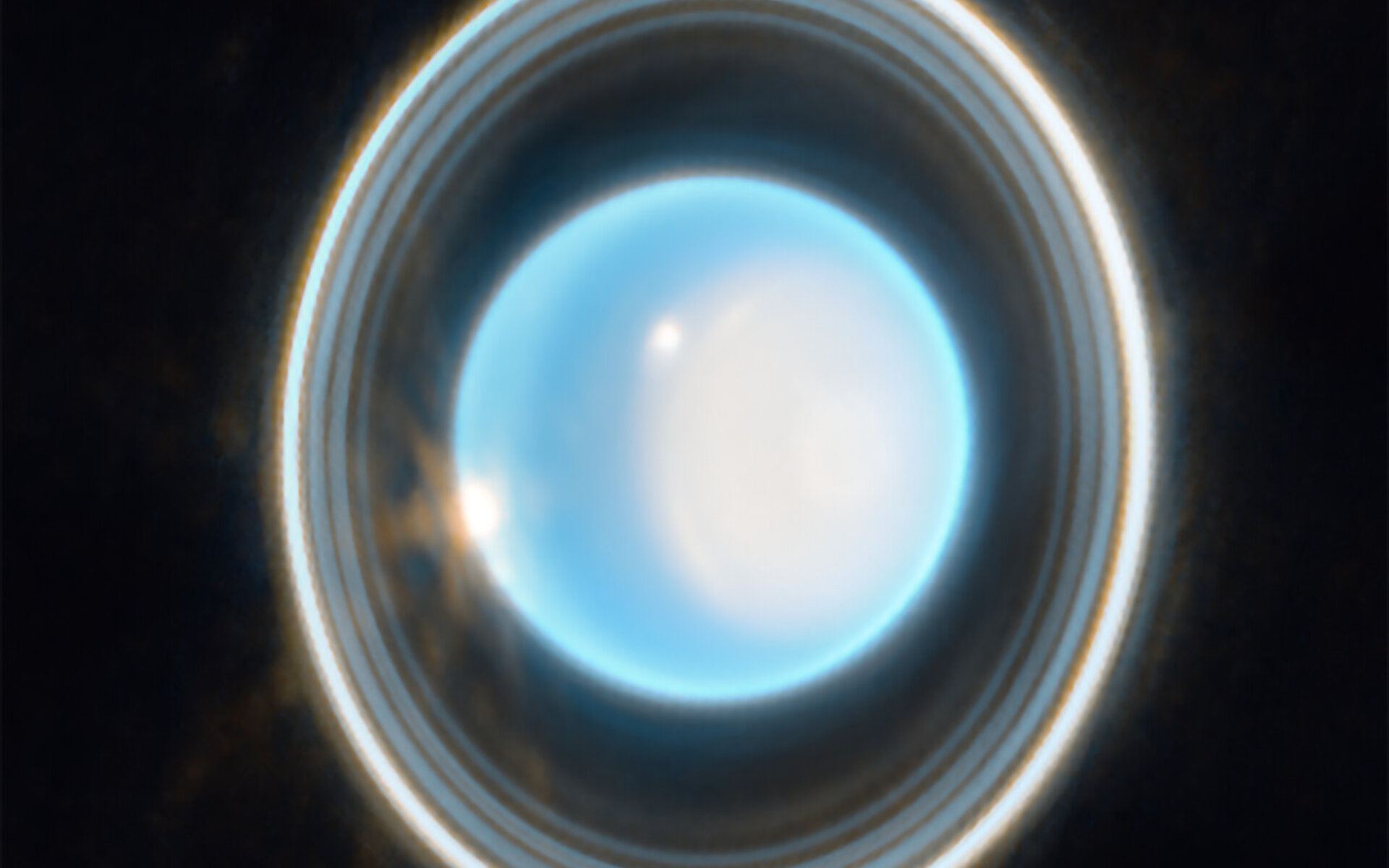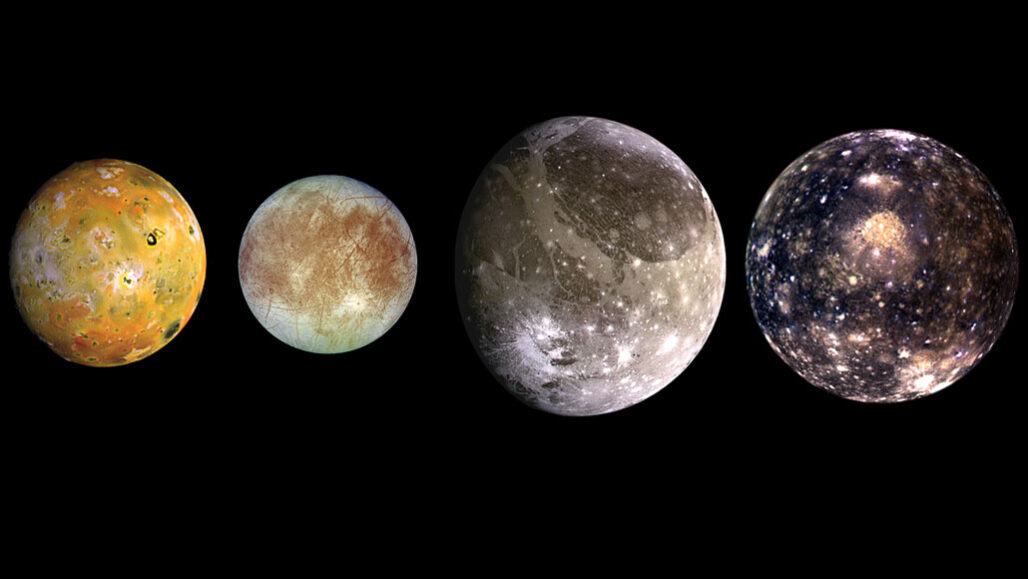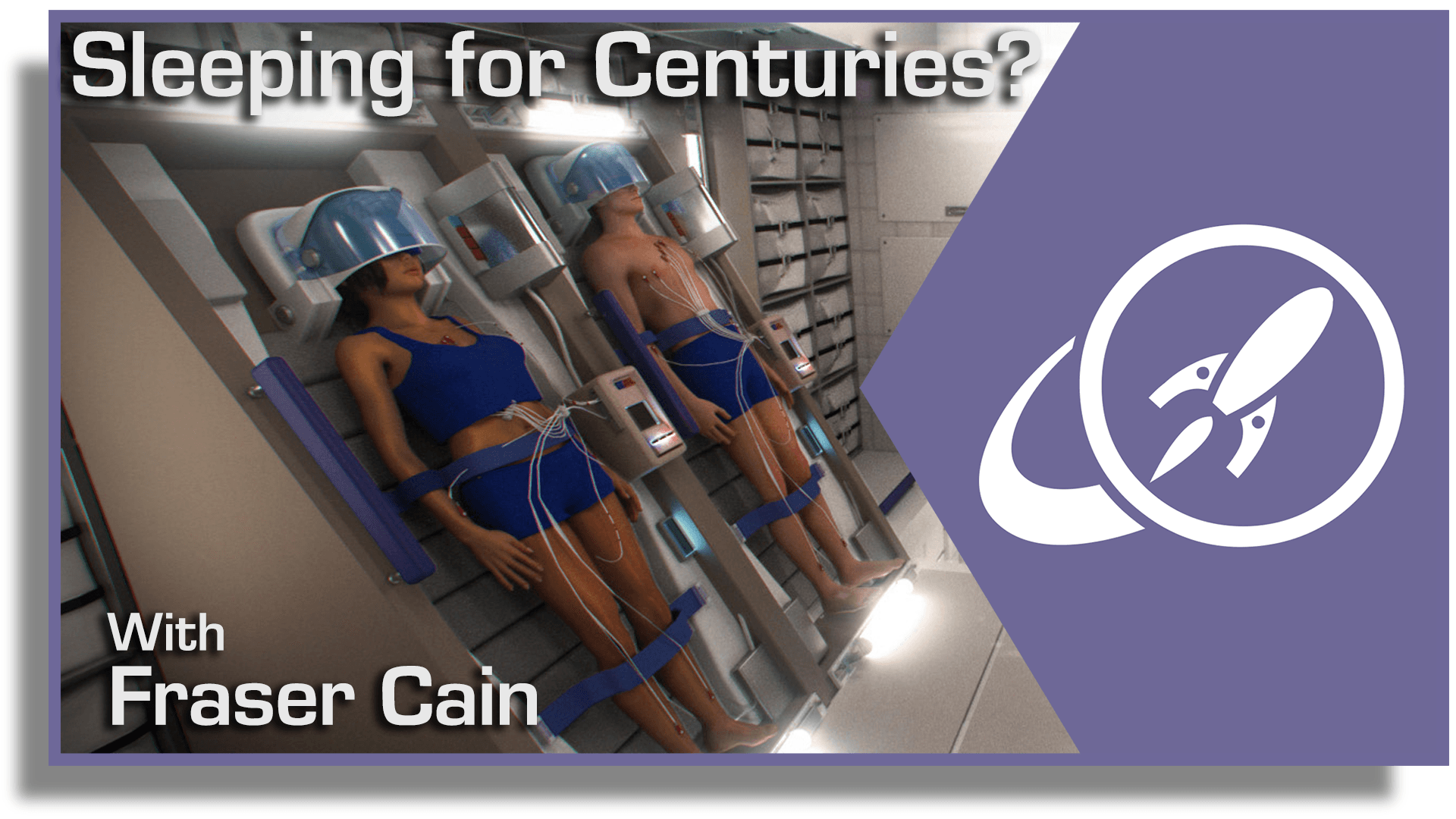It seems crazy that Uranus was discovered in 1781 yet here we are, in 2024 and we have only sent one spacecraft to explore Uranus. Voyager 2 is the only spacecraft to have given us close-up images of Uranus (and Neptune) but since their visit in 1986, we have not returned. There have of course been great images from the Hubble Space Telescope and from the James Webb Space Telescope but we still have lots to learn about them.
Continue reading “It’s Time to Go Back to Uranus. What Questions do Scientists Have About the Ice Giants?”There's a Polar Cyclone on Uranus' North Pole
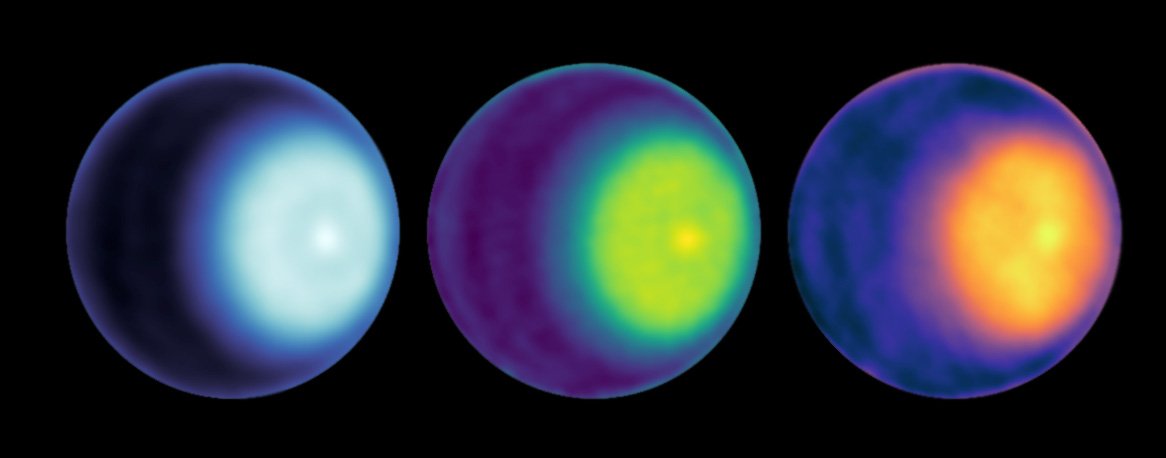
Uranus takes 84 years to orbit the Sun, and so that last time that planet’s north polar region was pointed at Earth, radio telescope technology was in its infancy.
But now, scientists have been using radio telescopes like the Very Large Array (VLA) the past few years as Uranus has slowly revealing more and more of its north pole. VLA microwave observations from 2021 and 2022 show a giant cyclone swirling around this region, with a bright, compact spot centered at Uranus’ pole. Data also reveals patterns in temperature, zonal wind speed and trace gas variations consistent with a polar cyclone.
Continue reading “There's a Polar Cyclone on Uranus' North Pole”Saturn’s Rings Warm Up its Atmosphere
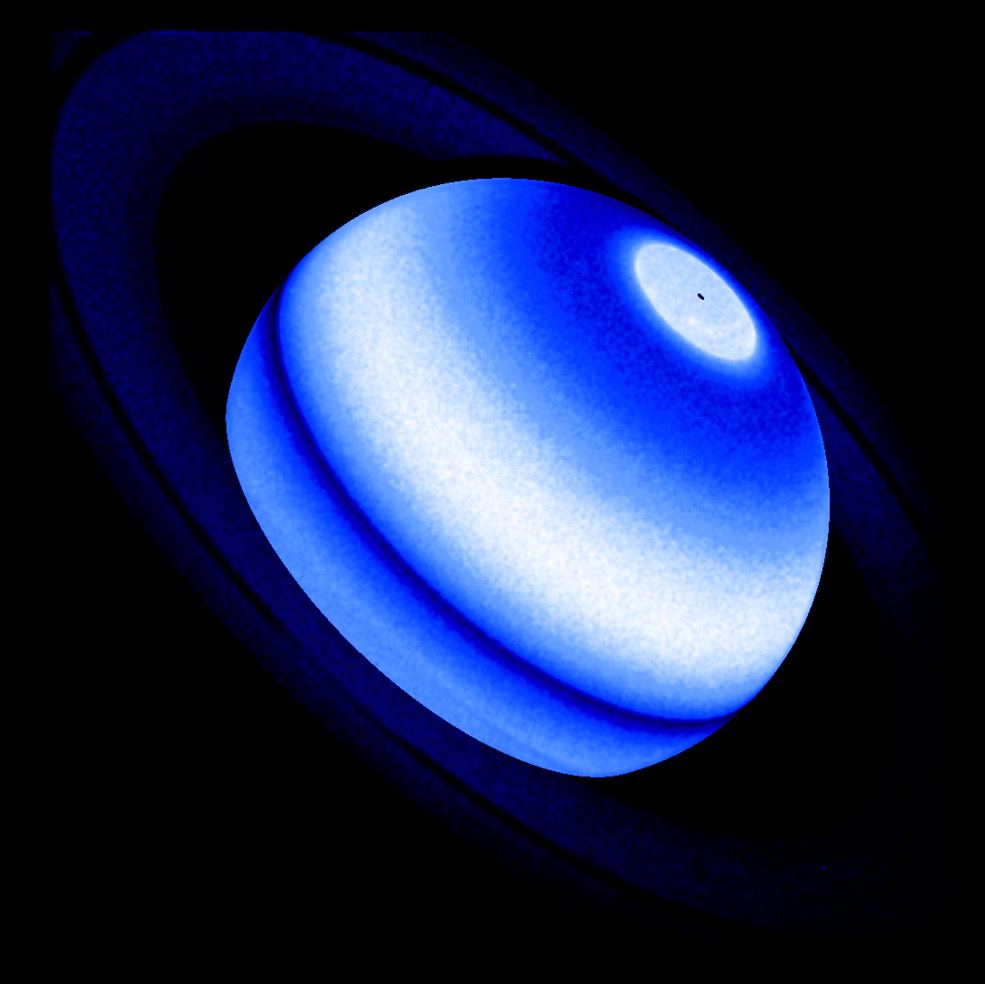
Saturn’s rings are one of the most well-known features throughout astronomy. While much is known about them, they still make headlines from time to time. This includes a recent study involving an international team of researchers that could help paint a clearer picture of the interaction between the gas giant and the massive ring system that encircles it.
Continue reading “Saturn’s Rings Warm Up its Atmosphere”The Favorite Solar System Moons of Planetary Geologists; An In-Depth Discussion
The moons of our Solar System have garnered quite a lot of attention in the last few years, especially pertaining to astrobiology and the search for life beyond Earth. From the Galilean moons of Jupiter to the geysers of Enceladus to the methane lakes on Titan, these small worlds continue to humble us with both their awe and mystery. But do the very same scientists who study these mysterious and intriguing worlds have their own favorite moons? As it turns out, seven such planetary geologists were kind enough to share their favorite Solar System moons with Universe Today!
Continue reading “The Favorite Solar System Moons of Planetary Geologists; An In-Depth Discussion”“Ain’t like Dusting Crops!” How We’ll Actually Navigate Interstellar Space
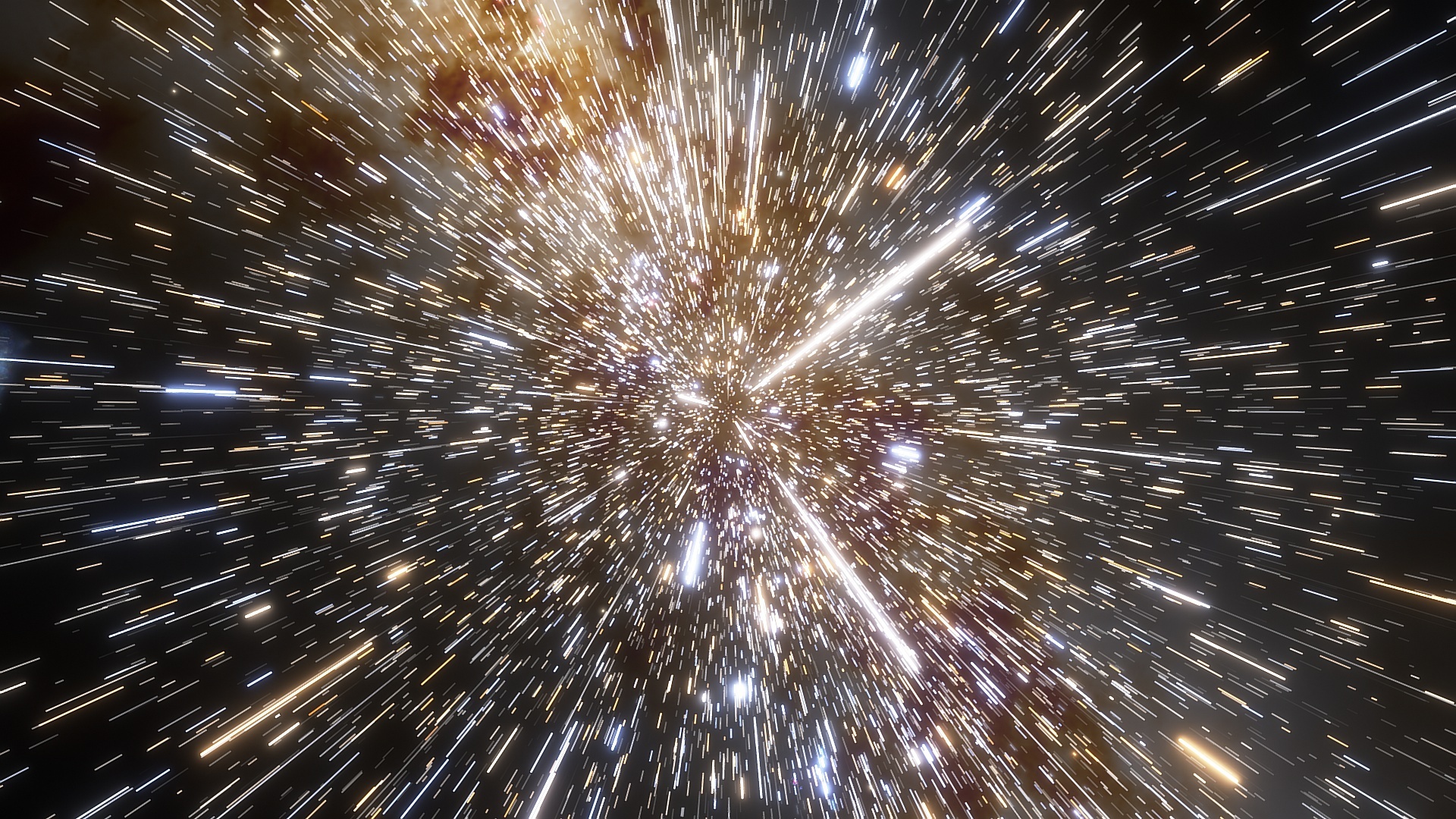
May the 4th be With You!
Blasting out of Mos Eisley Space Port, the Millennium Falcon carries our adventurers off Tatooine bringing Luke Skywalker across the threshold into space. With Imperial Star Destroyers closing, Luke bemoans Han Solo’s delay in jumping to Hyperspace. It takes time to make these calculations through the Falcon’s “Navicomputer.” Han explains that otherwise they could “fly right through a star” or “bounce too close to a supernova.” (probably the same effect of each – also are supernovas bouncy?)
Celestial calculations are needed to figure out where you’re going. In Star Wars these are done by ship computers, or later by trusty astromech droids like R2-D2. But, for the first time, simulations have been conducted of an uncrewed ship’s ability to autonavigate through interstellar space. While not at Hyperspace speeds, the simulations do account for velocities at up to half the speed of light. Created by Coryn A.L. Bailer-Jones of the Max Plank Institute for Astronomy, these simulations may be our first step to creating our own “Navicomputers” (or R2-D2s if they have a personality).

c. NASA
The Pale Blue Dot: Now New and Improved

Thirty years have now passed since the Voyager 1 spacecraft snapped one of the most iconic and memorable pictures in spaceflight history. Known as the “Pale Blue Dot,” the heart-rending view shows planet Earth as a single, bright blue pixel in the vastness of space, as seen from the outer reaches of the solar system.
Now, NASA and the Jet Propulsion Laboratory have provided a new and improved version, using state of the art image-processing software and techniques to reprocess the thirty-year-old image. JPL software engineer and image processor Kevin Gill, whose images we feature often on Universe Today, led the effort.
Continue reading “The Pale Blue Dot: Now New and Improved”Is Human Hibernation Possible? Going to Sleep for Long Duration Spaceflight
We’ve spent a few articles on Universe Today talking about just how difficult it’s going to be to travel to other stars. Sending tiny unmanned probes across the vast gulfs between stars is still mostly science fiction. But to send humans on that journey? That’s just a level of technology beyond comprehension.
For example, the nearest star is Proxima Centauri, located a mere 4.25 light years away. Just for comparison, the Voyager spacecraft, the most distant human objects ever built by humans, would need about 50,000 years to make that journey.
I don’t know about you, but I don’t anticipate living 50,000 years. No, we’re going to want to make the journey more quickly. But the problem, of course, is that going more quickly requires more energy, new forms of propulsion we’ve only starting to dream up. And if you go too quickly, mere grains of dust floating through space become incredibly dangerous.
Based on our current technology, it’s more likely that we’re going to have to take our time getting to another star.
And if you’re going to go the slower route, you’ve got a couple of options. Create a generational ship, so that successive generations of humans are born, live out their lives, and then die during the hundreds or even thousands of year long journey to another star.
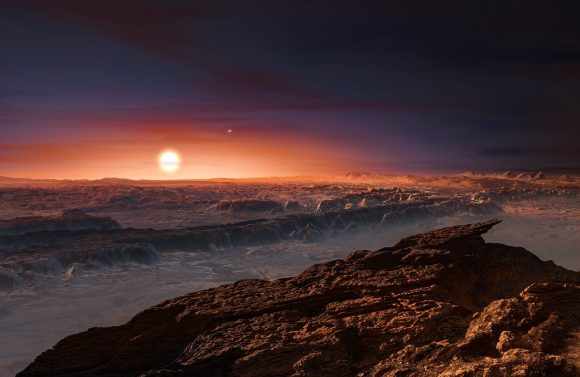
Imagine you’re one of the people destined to live and die, never reaching your destination. Especially when you look out your window and watch a warp ship zip past with all those happy tourists headed to Proxima Centauri, who were start enough to wait for warp drives to be invented.
No, you want to sleep for the journey to the nearest star, so that when you get there, it’s like no time passed. And even if warp drive did get invented while you were asleep, you didn’t have to see their smug tourist faces as they zipped past.
Is human hibernation possible? Can we do it long enough to survive a long-duration spaceflight journey and wake up again on the other side?
Before I get into this, we’re just going to have to assume that we never merge with our robot overlords, upload ourselves into the singularity, and effortlessly travel through space with our cybernetic bodies.
For some reason, that whole singularity thing never worked out, or the robots went on strike and refused to do our space exploration for us any more. And so, the job of space travel fell to us, the fragile, 80-year lifespanned mammals. Exploring the worlds within the Solar System and out to other stars, spreading humanity into the cosmos.
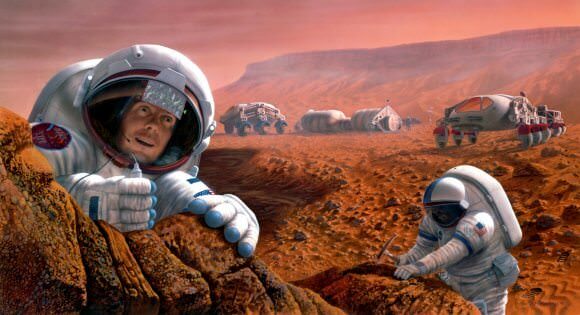
Come on, we know it’ll totally be the robots. But that’s not what the science fiction tells us, so let’s dig into it.
We see animals, and especially mammals hibernating all the time in nature. In order to be able survive over a harsh winter, animals are capable of slowing their heart rate down to just a few beats a minute. They don’t need to eat or drink, surviving on their fat stores for months at a time until food returns.
It’s not just bears and rodents that can do it, by the way, there are actually a couple of primates, including the fat-tailed dwarf lemur from Madagascar. That’s not too far away on the old family tree, so there might be hope for human hibernation after all.
In fact, medicine is already playing around with human hibernation to improve people’s chances to survive heart attacks and strokes. The current state of this technology is really promising.
They use a technique called therapeutic hypothermia, which lowers the temperature of a person by a few degrees. They can use ice packs or coolers, and doctors have even tried pumping a cooled saline solution through the circulatory system. With the lowered temperature, a human’s metabolism decreases and they fall unconscious into a torpor.
But the trick is to not make them so unconscious that they die. It’s a fine line.
The results have been pretty amazing. People have been kept in this torpor state for up to 14 days, going through multiple cycles.
The therapeutic use of this torpor is still under research, and doctors are learning if it’s helpful for people with heart attacks, strokes or even the progression of diseases like cancer. They’re also trying to figure out if there are any downsides, but so far, there don’t seem to be any long-term problems with putting someone in this torpor state.
A few years ago, SpaceWorks Enterprises delivered a report to NASA on how they could use this therapeutic hypothermia for long duration spaceflight within the Solar System.
Currently, a trip to Mars takes about 6-9 months. And during that time, the human passengers are going to be using up precious air, water and food. But in this torpor state, SpaceWorks estimates that the crew will a reduction in their metabolic rate of 50 to 70%. Less metabolism, less resources needed. Less cargo that needs to be sent to Mars.
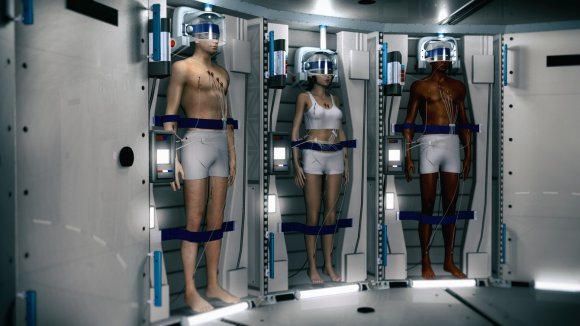
The astronauts wouldn’t need to move around, so you could keep them nice and snug in little pods for the journey. And they wouldn’t get into fights with each other, after 6-9 months of nothing but day after day of spaceflight.
We know that weightlessness has a negative effect on the body, like loss of bone mass and atrophy of muscles. Normally astronauts exercise for hours every day to counteract the negative effects of the reduced gravity. But SpaceWorks thinks it would be more effective to just put the astronauts into a rotating module and let artificial gravity do the work of maintaining their conditioning.
They envision a module that’s 4 metres high and 8 metres wide. If you spin the habitat at 20 revolutions per minute, you give the crew the equivalent of Earth gravity. Go at only 11.8 RPM and it’ll feel like Mars gravity. Down to 7.8 and it’s lunar gravity.
Normally spinning that fast in a habitat that small would be extremely uncomfortable as the crew would experience different forces at different parts of their body. But remember, they’ll be in a state of torpor, so they really won’t care.
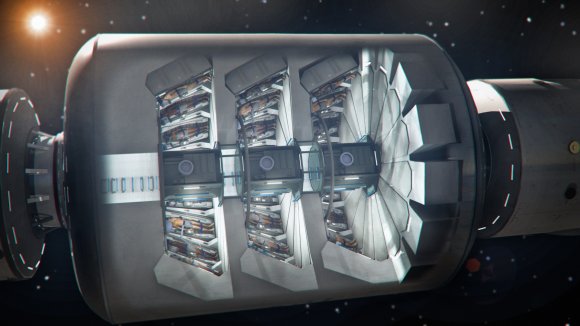
Current plans for sending colonists to Mars would require 40 ton habitats to support 6 people on the trip. But according to SpaceWorks, you could reduce the weight down to 15 tons if you just let them sleep their way through the journey. And the savings get even better with more astronauts.
The crew probably wouldn’t all sleep for the entire journey. Instead, they’d sleep in shifts for a few weeks. Taking turns to wake up, check on the status of the spacecraft and crew before returning to their cryosleep caskets.
What’s the status of this now? NASA funded stage 1 of the SpaceWorks proposal, and in July, 2016 NASA moved forward with Phase 2 of the project, which will further investigate this technique for Mars missions, and how it could be used even farther out in the Solar System.
Elon Musk should be interested in seeing their designs for a 100-person module for sending colonists to Mars.
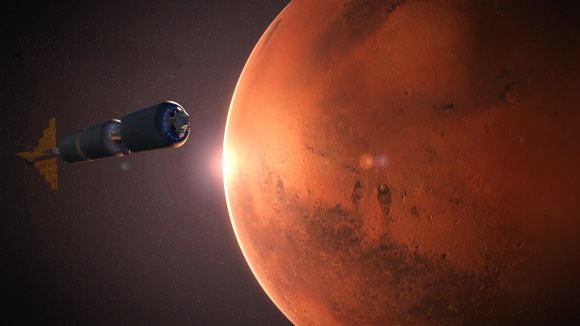
In addition, the European Space Agency has also been investigating human hibernation, and a possible way to enable long-duration spaceflight. They have plans to test out the technology on various non-hibernating mammals, like pigs. If their results are positive, we might see the Europeans pushing this technology forward.
Can we go further, putting people to sleep for decades and maybe even the centuries it would take to travel between the stars?
Right now, the answer is no. We don’t have any technology at our disposal that could do this. We know that microbial life can be frozen for hundreds of years. Right now there are parts of Siberia unfreezing after centuries of permafrost, awakening ancient microbes, viruses, plants and even animals. But nothing on the scale of human beings.
When humans freeze, ice crystals form in our cells, rupturing them permanently. There is one line of research that offers some hope: cryogenics. This process replaces the fluids of the human body with an antifreeze agent which doesn’t form the same destructive crystals.
Scientists have successfully frozen and then unfrozen 50-milliliters (almost a quarter cup) of tissue without any damage.
In the next few years, we’ll probably see this technology expanded to preserving organs for transplant, and eventually entire bodies, and maybe even humans. Then this science fiction idea might actually turn into reality. We’ll finally be able to sleep our way between the stars.
Weekly Space Hangout – Sept 23, 2016: Dr. Frank Timmes and Online Astronomy Education
Host: Fraser Cain (@fcain)
Special Guests:
Dr. Frank Timmes is an astrophysicist at Arizona State University and will be discussing online astronomy education and the Global Freshman Academy. His interests include the universe’s evolving composition and its implications for life in the universe. Dr. Timmes’ current area of research is nuclear astrophysics and the creation of the periodic table.
Guests:
Morgan Rehnberg (MorganRehnberg.com / @MorganRehnberg)
Dave Dickinson (www.astroguyz.com / @astroguyz)
Kimberly Cartier ( KimberlyCartier.org / @AstroKimCartier )
Nicole Gugliucci (cosmoquest.org / @noisyastronomer)
Their stories this week:
New bill targets serial harasses
Microlensing circumbinary planet detected
Repeat of Voyager’s “impossible” cloud
We are now using a tool called Trello to submit and vote on stories we would like to see covered each week, and then Fraser will be selecting the stories from there. Here is the link to the Trello WSH page (http://bit.ly/WSHVote), which you can see without logging in. If you’d like to vote, just create a login and help us decide what to cover!
We record the Weekly Space Hangout every Friday at 12:00 pm Pacific / 3:00 pm Eastern. You can watch us live on Universe Today, or the Universe Today YouTube page.
Jupiter’s Moon Ganymede

In 1610, Galileo Galilei looked up at the night sky through a telescope of his own design. Spotting Jupiter, he noted the presence of several “luminous objects” surrounding it, which he initially took for stars. In time, he would notice that these “stars” were orbiting the planet, and realized that they were in fact Jupiter’s moons – which would come to be named Io, Europa, Ganymede and Callisto.
Of these, Ganymede is the largest, and boasts many fascinating characteristics. In addition to being the largest moon in the Solar System, it is also larger than even the planet Mercury. It is the only satellite in the Solar System known to possess a magnetosphere, has a thin oxygen atmosphere, and (much like its fellow-moons, Europa and Callisto) is believed to have an interior ocean.
Continue reading “Jupiter’s Moon Ganymede”
Astronomy Cast Ep. 384: Escaping Probes
The gravity of the Earth is a tough thing to escape, but breaking free from the gravity of the Sun is on a whole other level. But humans have achieved this amazing accomplishment, and right now there are several spacecraft leaving the Solar System and never coming back.

